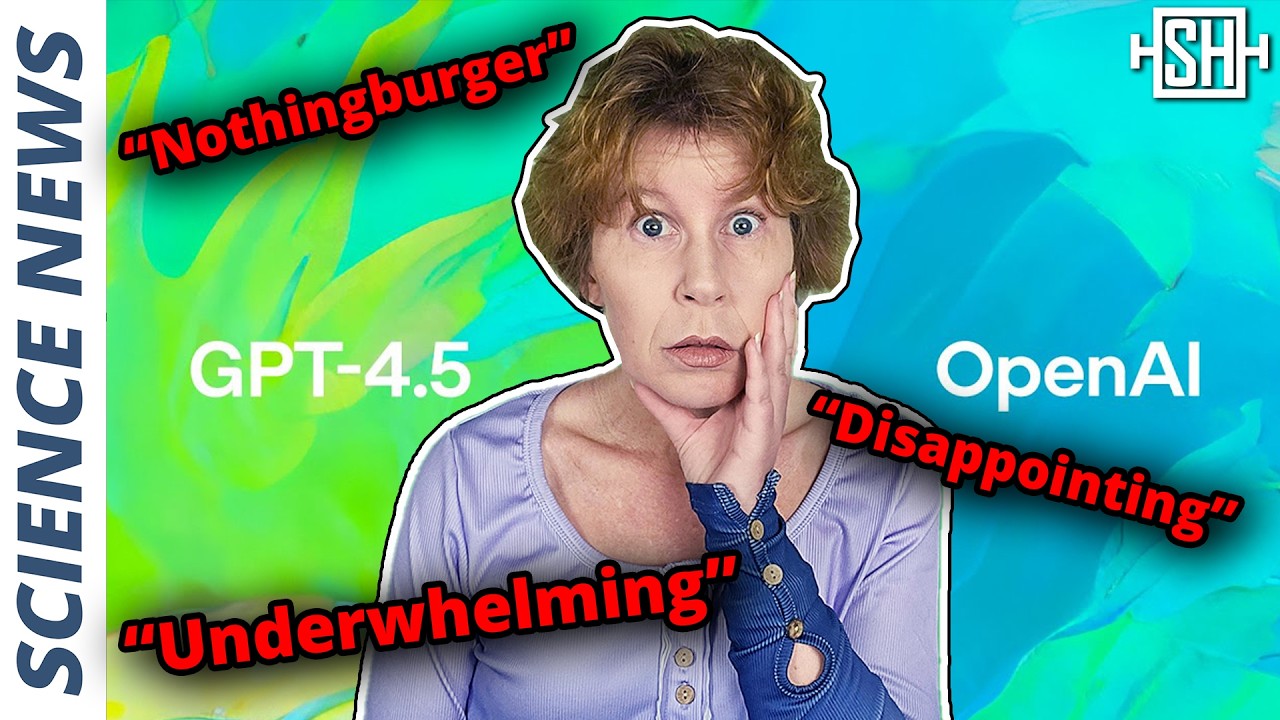The video explains that AI development is currently experiencing a slowdown, with recent model updates being incremental and failing to deliver groundbreaking progress, leading experts to believe that major breakthroughs may still be years away. It emphasizes that future advancements are likely to come from obscure academic research and innovative “world models” that enable AI to learn and reason more like humans, marking a potential new phase in AI evolution.
The video discusses the current state of AI development, highlighting a recent slowdown in significant progress. Despite the release of models like GPT-4.5, many users find these updates to be incremental and underwhelming, often describing them as superficial improvements rather than breakthroughs. Other models such as Anthropic’s Claude 3.7, Gemini 2.0, and Meta’s Lama have also failed to impress, with some recent versions performing worse than their predecessors. This period of disillusionment suggests that large language models (LLMs) have reached diminishing returns, and substantial progress may only come with entirely new approaches.
Industry experts and insiders believe that the current phase of AI development is entering a period of exploration and discovery, similar to a renaissance driven by novel ideas rather than scaling existing models. Satska, a former OpenAI employee, and other leaders like Google’s Sun Parkai and Meta’s Jean Leur predict that the next big leap in AI might still be years away, with 2025 expected to be a slow year for breakthroughs. The focus is shifting from scaling existing models to discovering fundamentally new paradigms that can push AI toward human-level intelligence, akin to a software puberty.
The video emphasizes that much of the recent research and advancements are still rooted in academic papers that are often obscure and difficult for the general public to understand. Companies are working on incremental improvements, such as enhancing models’ reasoning, memory, and ability to integrate with other software for specific tasks like mathematics. These efforts aim to improve current models’ logical and reasoning capabilities but are seen as temporary steps rather than the revolutionary change needed to reach true AI intelligence.
Looking ahead, the speaker highlights the importance of “world models”—AI systems that learn by interacting with the physical world and continue to learn post-training. Examples include DeepMind’s Genie 2, which creates interactive 3D environments for AI agents to learn from, and Nvidia’s Cosmos platform, which generates realistic 3D models with physics. These models aim to mimic human learning processes by building mental representations of reality, which could be crucial for the next phase of AI evolution. Such approaches are expected to lead to more reasoning and understanding, moving beyond mere pattern recognition.
Finally, the video encourages viewers to explore educational resources like Brilliant, which offers interactive courses on topics related to AI, science, and mathematics. The presenter promotes her own course on quantum mechanics and provides a link for free trial and discounts, emphasizing the importance of understanding the foundational concepts behind AI and science. Overall, the message is that the next major breakthroughs in AI are likely hidden in academic research and innovative world models, and that the current slowdown is temporary before a new wave of transformative progress arrives.
